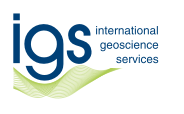GEOMAP Tanzania (2013 – 2015)
The Geothematic Mapping (geology, geochemistry, geophysics) and Capacity Building Project at the Geological Survey of Tanzania was carried out under the multi-disciplinary Sustainable Management of Mineral Resources Project (SMMRP), in part funded by the World Bank. The project was delivered by an international consortium comprising, IGS(BGSi), the Council for Geoscience Pretoria, the University of Dar es Salaam, the University of Bergen and MINTEK SA working in partnership with the Geological Survey of Tanzania (GST).

IGS was the lead member of the Consortium and as well as technical services was responsible for the overall management and coordination of the project reporting to the CEO of the GST through the Project Coordinator. The focus of the project was designed to provide technical guidance to GST through training and knowledge exchange, to support and empower staff through mentoring and to ensure the quality of all products and deliverables through institutional strengthening and capacity building; working throughout in cooperation with the Geological Survey of Tanzania staff.
The project started in April 2013, and was completed in June 2015 to a highly satisfactory level, successfully delivering on schedule 100% of the technical outputs as agreed with the Client. In summary the project produced, 18 x 1:100,000 scale geological maps (see below); 12 x 1:100,000 scale geophysical maps; 20 x 1:100,000 scale and 20 x 1:200,000 scale single element geochemical maps; 4 x 1:500,000 scale geophysical maps of the Singida-Dodoma-Handeni Corridor (Block A); 1 x 1:500,000 scale mineral potential map (Block A); 28 technical reports covering geology (7); geophysics (13); geochemistry (4) and specialist studies on mineral potential, whole rock geochemistry, metamorphism and geochronology; as well as a detailed mineral promotion brochure.
Under the guidance of IGS and its consortium partners, the GST has also taken important steps to upgrade its technical and analytical laboratory capacity through staff training as well as acquiring new instrumentation housed in purpose built and/or renovated laboratories. It put into place the necessary procedures and protocols to achieve ISO accreditation in line with its ambition to host a centre of analytical excellence for the mining and mineral sector in Tanzania.
This IGS-led project was characterised throughout by a spirit of cooperation and flexibility based on a positive relationship between the Consultant’s team and the GST Project Management, and an excellent working environment built on trust and professional competence. As a direct result of the project, the Geological Survey of Tanzania was left in a stronger position to support the promotion of the mineral sector in Tanzania through use of the new geoscientific data acquired and archived in a modern digital format. Under this project, and specifically through the support of the IGS consortium, the GST successfully enhanced its capacity in geological mapping, geochemical surveys, the interpretation of airborne geophysical data, digital cartography and analytical, chemical, and geotechnical laboratory services. The GST now has a well-trained cadre of geoscientists and cartography/GIS staff that have the skills to continue with the systematic national geological mapping and geochemical survey programme, one of the basic remits of a geological survey. The geodata generated under the SMMRP work programme is available quickly and efficiently, at a commercial cost, to both explorers and mining companies through both the GST and MEM.

